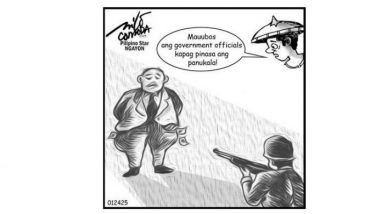The saga of Saint Padre Pio
SAN GIOVANNI ROTONDO, Italy — Our family is privileged to be billeted in the same room in the very same hotel where then Karol Cardinal Wojtyla of Poland (Later Pope John Paul II, and recently Saint JP II) on November 1974, stayed while visiting the church where the first miracles of Padre Pio took place, in Foggia, Italy.
We are here to see the uncorrupted body of St. Padre Pio (we saw earlier the intact body of St. Peregrene in Forli, Italy, the tomb of St. Antonio de Padua in Portugal, as well as the crypt of St. Francis Assisi and also St. John Paul II and St. Peter himself in St. Peter’s Basilica) and to pray for the healing of our sick friends and relatives. This rugged mountain is now a center of pilgrimages of around 20,000 people daily. Born as Francisco Forgionne, Padre Pio was originally from Pietrelcina, a small village in Benevento. The son of poor shepherds, he was sent to pasture sheep and cattle when he started to pray.
He met the Capuchin priest Fra Camillo, and he was inspired to enter religious life. In January 1903, he entered the Franciscan convent and became a priest in 1910, taking the name Padre Pio. He was assigned to San Giovanni Rotondo and that was the landmark that started his sainthood. He became sick with a serious illness and went home to Pietrelcina to live in a small hut where he meditated and prayed for long hours. There the stigmata, five wounds (exactly same as Jesus' five wounds) appeared, causing him unbearable pain. He was given the gift of bilocation, to be in two place at once, and also other miraculous abilities. He went back to San Giovanni Rotondo and performed many miracles of healing.
After he died, Pope John Paul II came back to pray at the tomb of Padre Pio. While alive, Padre Pio predicted two events in the life of John Paul, namely his future election as pope and the attack on him that almost ended his life. Padre Pio experienced so much persecution while still alive because many in the Catholic hierarchy didn’t believe in his stigmata or his miracles. When he died, there was a very meticulous investigation conducted by the authorities, many of whom objected to his beatification. But ultimately, Pope John Paul II himself canonized him saint on June 16, 2002.
We traveled nine hours by bus from Rome to San Giovanni Rotondo, on top of the mountain where a three-layered basilica dominates the landscape. The oldest and smallest church where Padre Pio performed most of his healing miracles is still there, but a bigger church had been constructed beside it and now the two churches are joined and many of his memoirs are open for viewing, including his clothes, shoes, books, chairs, bed, and even the oxygen tank next his bed. The modern church can accommodate no less than 10,000 pilgrims who want to pray and hear mass. At the side are marvelous paintings laced in gold mosaic, depicting Padre Pio's life and miracles.
Our pilgrimage chaplain, Fr. Rey said mass in one of the chapels before we bid adieu to the blessed land of Padre Pio. What matters most is that we were immensely uplifted by the inspiring saga of his life. We are now traveling another nine hours back to Rome, feeling very blessed and spiritually enriched.
Email: [email protected]
- Latest























